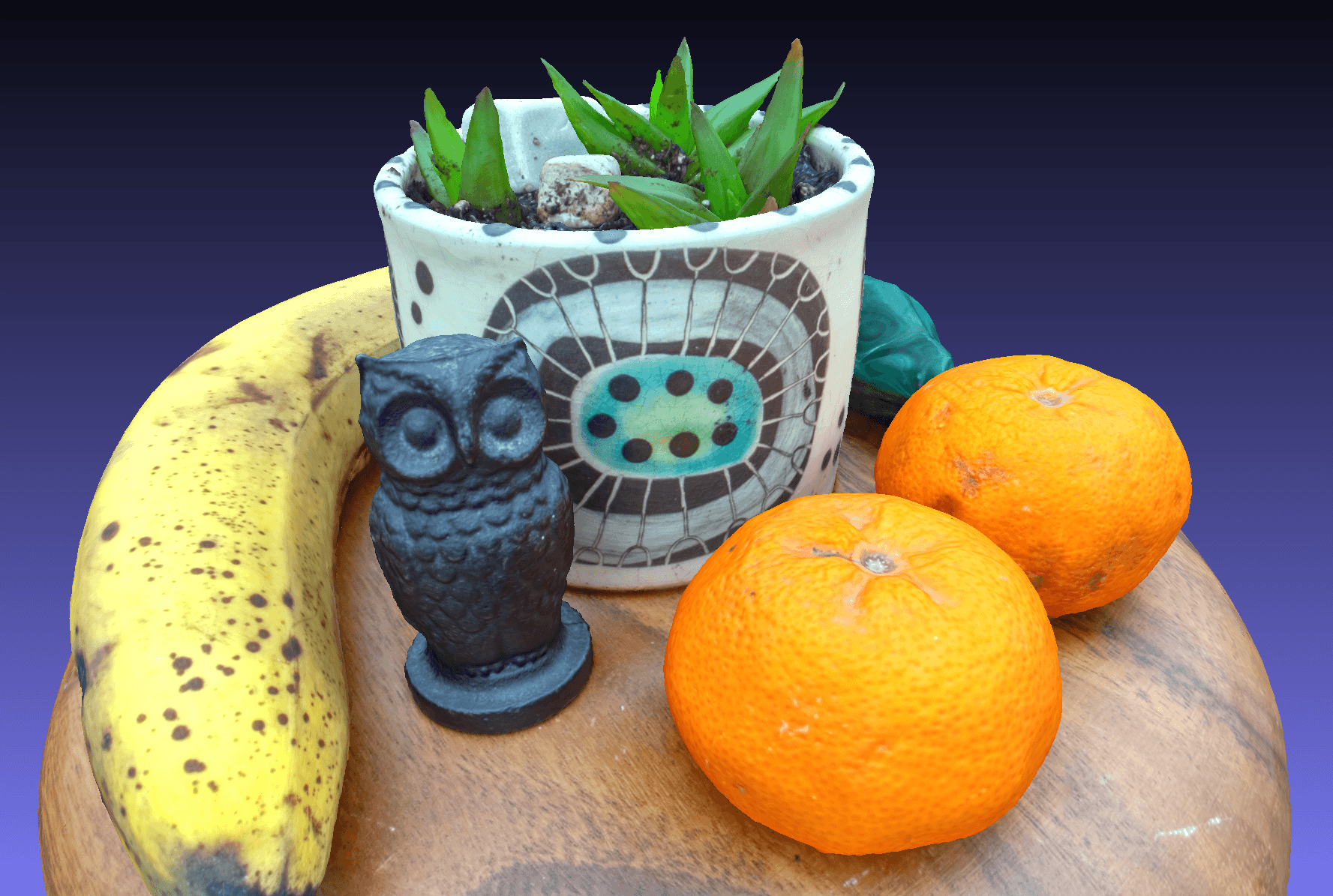Blog
Smartphone vs DSLR photogrammetry comparison
Published on
April 25, 2021
Intro
I’m a big fan of Photogrammetry. I use it for fun and as part of my business (I’m a VR/AR developer). I often run into objects that I would like to scan and sometimes I don’t have a nice big camera with me, so I use my smartphone. I’ve always wondered if those smartphone scans would turn out better if I had my DSLR, so today I decided to test this once and for all. I present you with the Smartphone vs DSLR photogrammetry shootout.
The Procedure
On the right we have an iPhone 11 running iOS 14 and on the left we have my trusty Canon 60D with an EF-S 18-135mm lens. Neither are exactly high-end, but that’s what I have so it will have to do. As the test subject I decided to arrange a nice little still-life platter with various objects of different color, reflectivity and texture.
The rock is shiny jade, the owl is dark cast iron, the planter is clay and has a shiny glaze on it, and the fruit are, well, fruit. I placed my subject outside and waited for a nice big cloud to cover the sun.
Then I proceeded to shoot photos. I shot about 500 smartphone photos using an app called SkyFlow. It’s a timelapse app that allowed me to shoot 3 frames per second without having to mash the trigger button, so all I had to do was slowing walking around my subject. The Canon was also shot hand-held, and I snapped about 350 RAW frames. I then converted these into JPEG and fed both datasets to RealityCapture. I processed both datasets on “High” settings, each took about 4 hours on my computer (1070 GPU).
Both datasets resulted in a mesh that has about 25m polygons. I used Instant Meshes to decimate those models down to about 1m polygons, imported it back into RealityCapture and generated a single 8k texture.
Results
Here is a comparison of a the full 25m polygon mesh. On the stop is the Canon D60 and the bottom is the iPhone 11 scan.
Canon D60:
iPhone 11:
Canon D60:
Iphone 11:
Conclusion
The Canon scan is better. Is it MUCH better? Not really. I would say it’s slightly better. Doing the scan itself was much easier with the iPhone. Also, these were shot in perfect lighting conditions, I’m sure the quality gap would grow in a low-light situation. My personal takeaway: There is no shame in smartphone scans. If the light is good, you can get great results. If you don’t have a real camera with you, a smartphone scan is better than no scan. If you want the best possible result, bring a big sensor camera. Cheers everyone.
